
The work completed at that time was just the cap rail from the forward gate on starboard, around the stern to the forward gate on port. Since then, the companionway, eyebrows, boom gallows and hand rails have been finished. Yet to go is the cap rail from the forward gates to the bow, both sides, as well as the 2" high pieces under the cap rail itself.

Because the material expands and contracts longitudinally about 1/4" in 8' with a 40 degree temperature change...I don't seem to have much of a problem down here!!!, I did not do any fancy scarf joints. Simple butts. The bronze is 1/2" half-round from Lewis Marine in Ft. Lauderdale.
Just had the boat re-surveyed last week, and the surveyor is quite excited about the material and how it looks. The boat is valued now more than ever!
The material came from PlasTeak in Ohio. Cost $65/length there, and with trucking to Jacksonville, ocean freight to St. Croix and trucking delivery to my marina, bumped each length to $100 each. Each of the 11 pieces are lumber dimension 1"x10"x12'. Made of recycled plastic gallon water/milk jugs, treated with uv inhibitors and "teak" color added, of course. The oldest pieces are now two years installed....and never been cleaned. The only thing I do to any of it, is look!
The material works like wood, and wood tools are the deal. Band saw, table saw, sanders, drills, routers etc. I sanded the "grain" into the finished pieces just before installation with 80 grit on a belt sander, except by hand where the routing was done.

Try them at www.plasteak.com. The guy I worked with was owner, Derek Gribble. He was a good help with questions.
Years ago I'd installed teak foot pads/steps on the rub rail on either side by the after gates as the original gel coat, then the Awlgrip, was slippery under foot, certainly when wet, and really because I have big feet and they don't fit on the rub rail well! So I made new steps in the PlasTeak, using a router to cut the "non-skids."
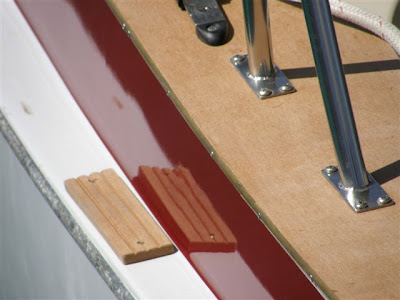
The fold down seat in photo 15 is for the windward helmsman to sit better on the lee side, a little more butt-room to sit on the rail while steering, so as to be able to see over the house with a clearer view of what's up ahead.

Not perfect, but a hell of a lot better than sitting on the lee seat where you can't see squat. Mostly I did that for the old racing days, but they are handy anytime...especially if your arms are as long as mine!
Now, for the technical aspects of working with this material:
For sealant, I used Silicone Sealant. Nothing special other than Clear, which I thought would be less offensive cosmetically. I used the big tubes with the gun, ran several "lines" so I could spread the goo evenly with a putty knife fairly quickly, both on the fiberglass and the "wood" exclusive of the overhangs, hoping to avoid air spaces and general gaps. Since this stuff "moves" with temperature changes, I wanted to perhaps make more of a gasket to disallow water seepage below into cabinettes, etc. The strength of the joint is in the mechanical screw fastenings, not the sealant/adhesive, so you use more fastening than with real wood. Silicone has very nice adhesive qualities on metal-to-fiberglass, for instance. So do adhesives like 5200. Remember I wanted clear. But since not much sticks to this stuff, "adhesive" won't matter, so the guys that put 5200 on EVERYTHING will have to rethink with this.
Derek Gribble said that when screwing down the material, over-drill the pilot hole in the PlasTeak just a bit. Enough so that when you put the screw in place, it just "falls" thru the hole. When you finish cranking down with the screwdriver, back off the fastening 1/4 turn. Yes you want the piece to be set, but yes you also want the piece to be able to "move" with the temperature changes.
He recommended pan head first, then round or oval head fastenings. On pieces 3/4" thick, you can counter bore a bit more than half the thickness of the stock, and still have enough depth to set the bungs. The caprail and smaller pieces, like the eyebrows, are not structural. They are for looks. He suggested using tapered bungs...that they sell.... but that presented a problem to me. He said just hammer the mother home, slice off with a wood chisel in the time honored way and finish off. They'll never come out. The problem I mention is that the depth of the counter bore, what's left after the fastening is set home, isn't terribly deep. I felt that with the tapered bung, it might not drive in deep enough to really squeeze in and set. And while all holes and counter bores were drilled on a drill press with depth stops for the counter bores, I was't ABOUT to start custom cutting each bung!!! There are HUNDREDS of them in this job! So I cut my own with either a half inch, or three-eighths plug cutter, depending on the application, again on the drill press. In the caprail case, 1/2" Remember this HDPE stuff doesn't hold glue well. Neither paint...nor varnish. So drilling the counter bore 1/2" also will produce a hole for a bung that will slide in nicely...and also slide out! I experimented on scrap, drilling 1/64" undersize holes and wanged the bungs home. They were snug, "reluctant" to come out. I tried another series 1/32 undersize. They didn't want to KNOW about coming out! I have a set of titanium bits in 64ths, ranging from the thickness of a hair on up to 1/2". When I drilled the bungs in scrap, I drilled down deep enough so that the ...what would later become the bottom of the bung....was rounded. That roundness allowed the bung to enter the slightly undersized hole, and be tapped, not really pounded, in.
In the eyebrow pieces....not shown in those pictures...they were not installed yet...the brows are closer to 5/8" x 3/4" or so. There really wasn't enough depth to be able to use pan or round headed fastenings. So I used counter sunk wood screws. You have to be really careful here to again back off the fastening a bit to allow movement. And the counter bore should only be 1/64 undersize, because the outward pressure of the bung in the 1/32 undersize hole is too much....the material doesn't have enough mass behind it....and cracks will develop. I have this happening in a few spots and need to re-make the pieces. I'm still learning the material. The learning curve isn't really steep, but it's there. Derek didn't mention that, but then I only told him I was replacing the caprail, the pieces being between 5 1/2 and 8" wide.
He has told me now though that 3M now makes a glue that works for HDPE. That might help setting bungs in flimsy pieces without needing to undersize the counterbore. Havn't tried that yet.
David Kummerle
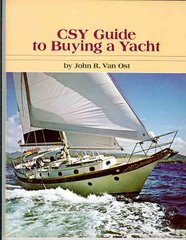
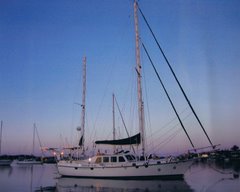
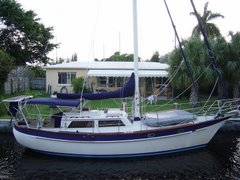
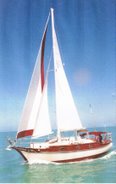
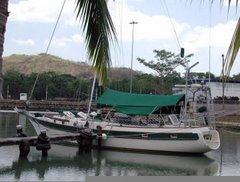
2 comments:
Thanks for the post on the PlasTeak. I will be using the stuff myself on my Westsail 42. See westsail42.blogspot.com.
Question: How well does this stuff bend "laterally".
For example, were you able to get the PlastTeak to gradually make the bend along the caprail going forward towards the bow?
The 3.5 x .75 stuff might work for me if I can get it to bend a bit.
Thanks!
I've sent your question to David Kummerel, owner of "Glory" and installer of the PlasTeak. Have not heard back, but I think if there ware a negative issue, David would have been upfront with it. I believe the material would easily handle the twist that is necessary to follow the curve of the Cap Rail.
Also: I've enjoyed reading your site, www.westsail42.blogspot.com
Good chance for "cross learning", kind of like cross training in sports! ;)
Post a Comment